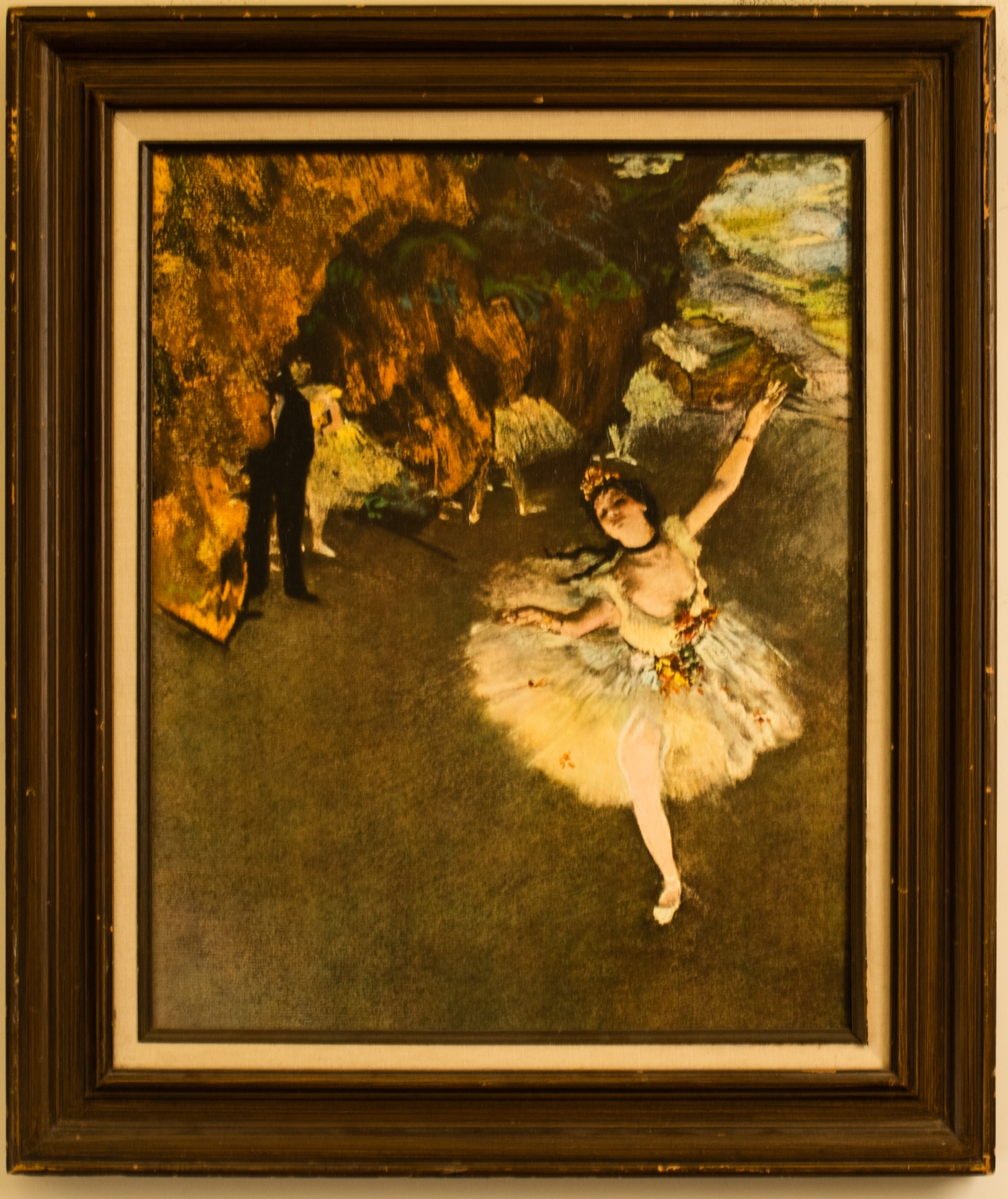L'Étoile (The Star)
Edward Degas is regarded as one of the founders of the Impressionist movement in 19th-century painting. However, he regarded himself as a realist or independent due to his pursuit of atypical subject matter and his tendency to paint from unusual vantage points and with asymmetrical compositions. He painted scenes of leisure activities of modern life, such as ballet dancers in the 1870s that eventually comprised perhaps his most memorable series of work. These studies addressed the human body in motion and explored the physicality, discipline, and even the social lives of the dancers themselves. In this particular piece, a lone ballerina in the lower right quadrant steps forward at the viewer, balancing on one foot with arms outstretched in a triumphant pose. The light cast from the stage beneath aggrandizes her accomplishment here, elevating her to stardom white illuminating her tulle skirt in a way that makes her literally appear as a star. The feet of other ballerinas can be picked out of the stage behind her just before they fade into the abrupt painterly marks above. A dark male figure, who is presumably the dancer's patron, stands off left stage watching the dancer. Due to the social realities of French ballet during this time, it is speculated that the young dancer would have finished her act, de-escalated from stardom, and retreated back to her to control of her patron (-information taken from www.edgar-degas.net). Degas sought to capture a moment of her movement but also the moment of her freedom as both fleeted over the course of the act.

